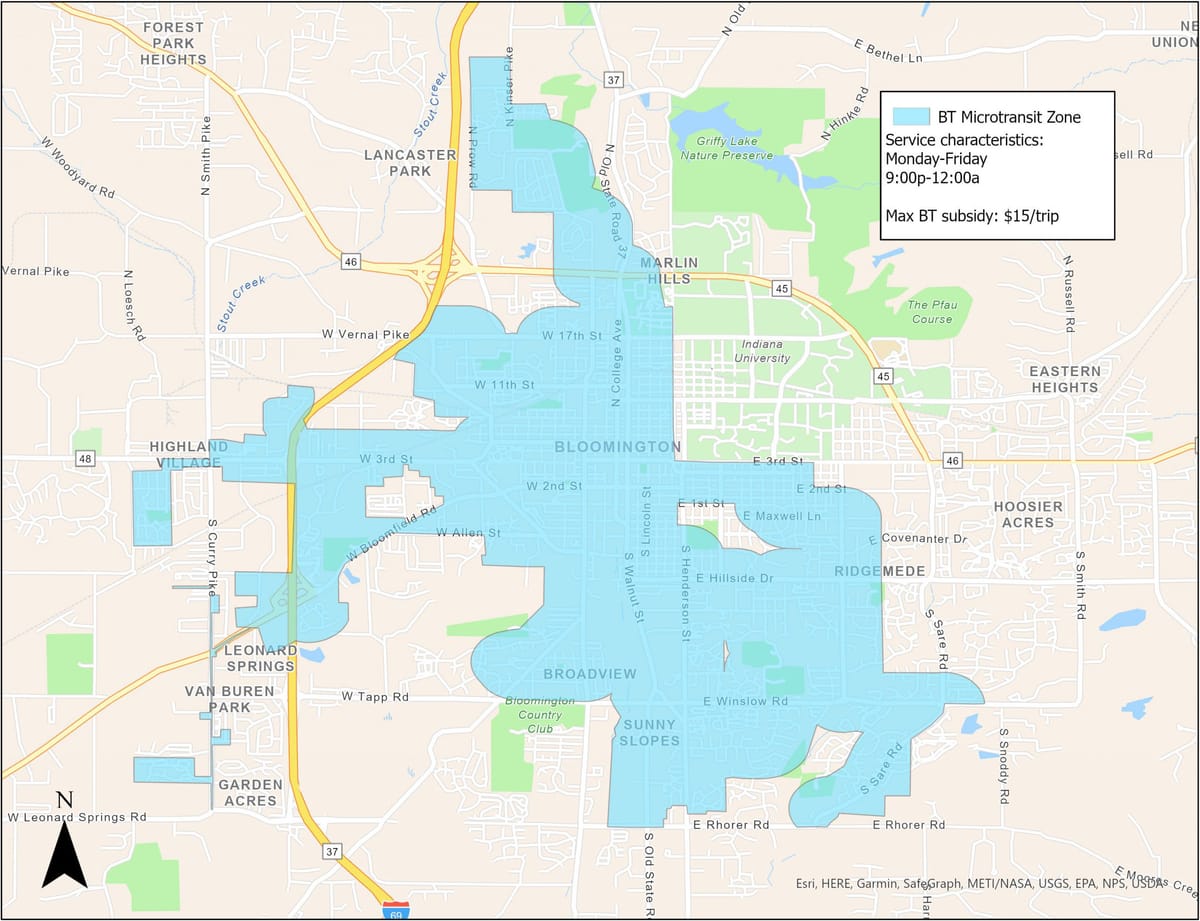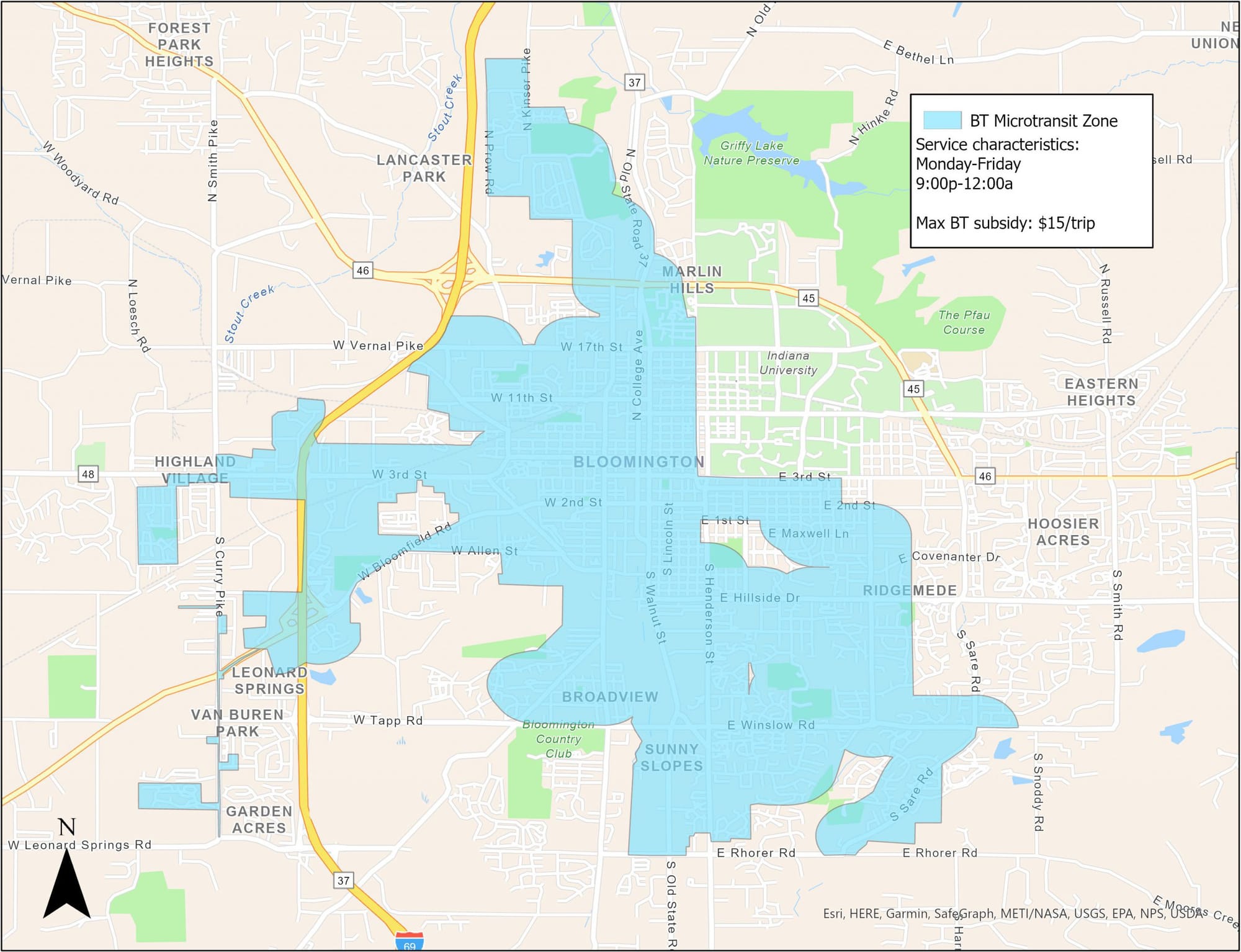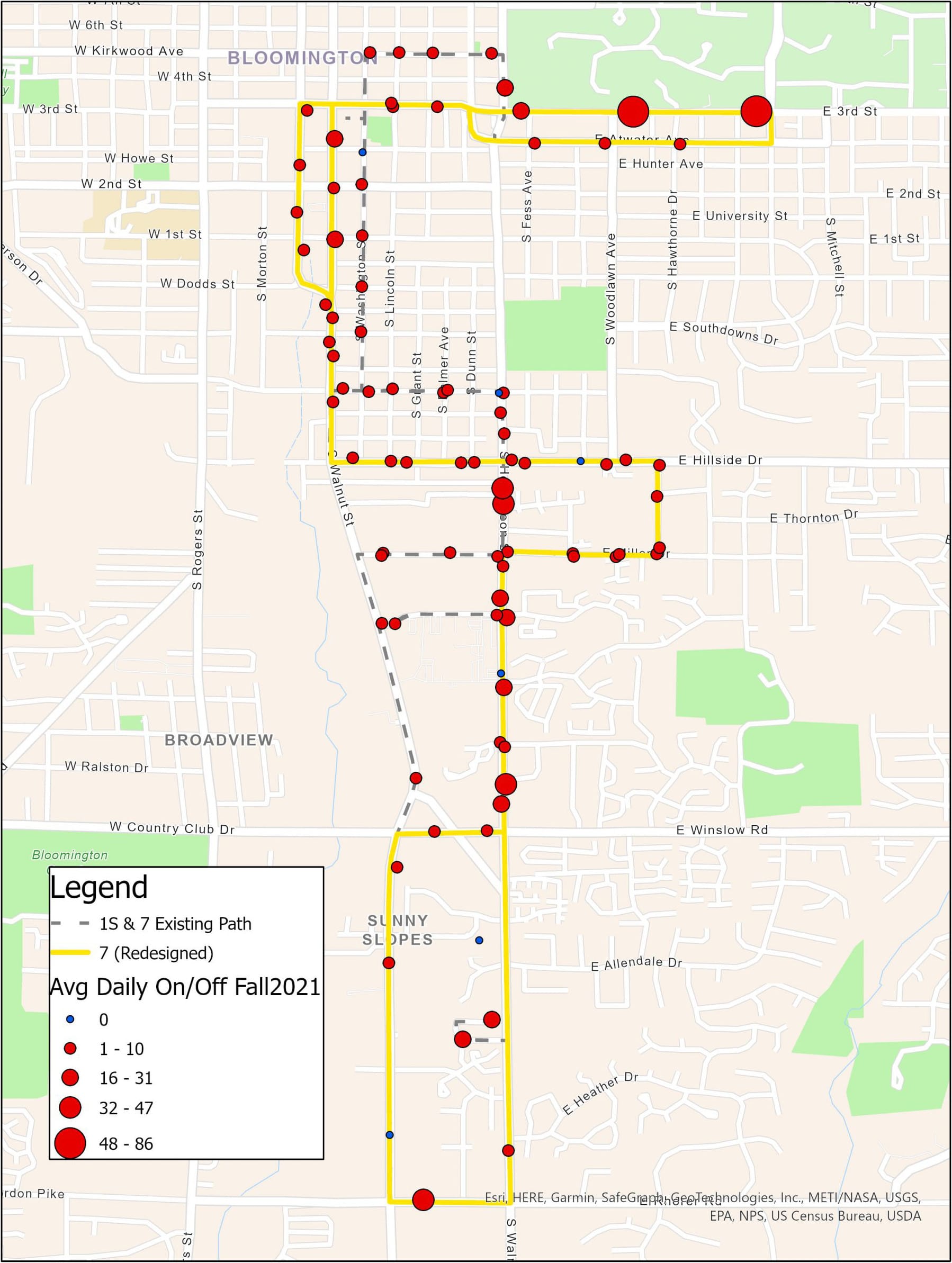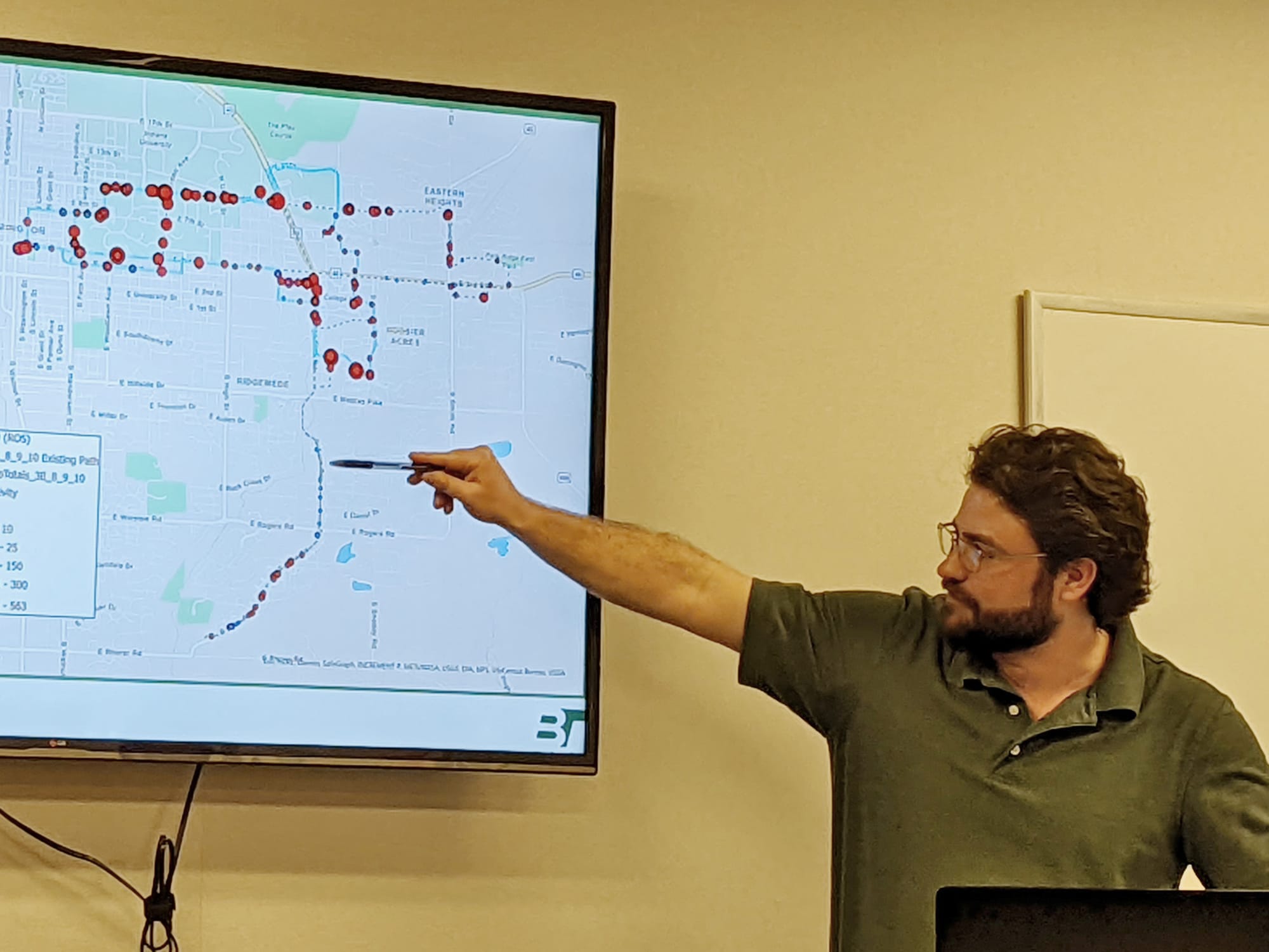Bloomington Transit wants public input: Route changes, late-hours swap of regular bus for Uber/Lyft






A series of changes to optimize bus routes that were planned for 2020 implementation, but were delayed by the COVID-19 pandemic, are now back under consideration by Bloomington Transit.
Highlights include: the consolidation of Routes 1 South and 7 Express into a single route to be called Route 7; and the merging of Route 3 East, Route 8 Local, Route 9 Campus, and Route 10 Hospital into a single route to be called Route 90.
The Route 90 would operate on a bidirectional loop, with 20-minute frequency each way. The loop would encompass downtown, the Indiana University campus, and some of the east side down to the College Mall area.
Subject to final board approval, those route changes would be implemented in August of this year.
A pilot project that could be rolled out earlier is the replacement of the late-night service on some routes with “microtransit.” That means passengers could take an Uber/Lyft style ride for the standard $1 fare, with the remaining cost, up to $15, to be covered by Bloomington Transit.
The pilot for the micro-transit would be rolled out in May, after the IU semester ends.
Bloomington Transit has modified the service change proposal from two years ago in enough ways that it has to undergo another public hearing process.
The public bus agency is currently doing a round of public information sessions, and will take public input at its next monthly board meeting on April 19. A decision by the board would come at the following meeting on May 17, according to planning and special projects manager Zac Hunek.
BT has also set up an online survey about possible service changes, which is open through May 1.
The first public information session was held at the Monroe County public library on March 31. The next one will be held at BT’s downtown transit center (301 S. Walnut St.) on Tuesday, April 5 from 5:30 p.m. to 7 p.m.
A virtual meeting accessible on the Zoom video conference platform will be held on April 7 from 2 p.m. to 3 p.m. [April 7 BT Zoom session]
Likely to get as much scrutiny as the route changes is the replacement of service from 9 p.m. to midnight with Uber/Lyft service on some of the routes that currently see very low ridership at that time.
Passengers would pay a $1 standard fixed route fare for the Uber/Lyft ride. The remaining cost would be covered by BT. Only a ride starting and ending in the prescribed service area for the program would be eligible for the BT microtransit program.
Passengers who don’t have a smartphone would be able to call BT to hail a trip on Uber/Lyft. Passengers who would otherwise board a fixed route bus with their wheelchairs by using the accessible ramps, would be able to call in to get a ride on BT’s paratransit service (BT Access).
A big part of BT’s motivation for rolling out the late-night Uber/Lyft service as a replacement for fixed-route service relates to its current driver shortage. It’s a challenge for public transportation agencies across the state. In January, BT was short about a dozen drivers.
BT’s current drivers are working extended hours, but that means BT is still not able to make every run for every route, which reduces frequency of service on some routes that carry a lot of passengers. That further depresses ridership numbers, which are down due to the effect of the pandemic.

At the March 31 public information session, planning and special projects manager Zac Hunek estimated that BT is now making about 75 percent of the runs that it made in 2019.
At BT’s March 15 board meeting, BT general manager John Connell said that switching to microtransit for late night service will allow BT to use its existing drivers more efficiently, by switching them from routes with low ridership to those with higher ridership.
Another motivation is based on recruitment of new drivers. At BT’s March 15 board meeting Connell said that it’s a challenge recruiting people who are willing to work past 9 p.m. He described 9 p.m. as a kind of “threshold” for how late a potential new driver is willing to work. The reaction goes something like this, Connell said: “I gotta work til midnight? I’m out!”
Connell said he thinks with BT’s new labor agreement, it is now offering competitive wages.
One possible use case for the new Uber/Lyft program could be Indiana University students who now already take Uber or Lyft routinely late at night. At the March 31 information session, BT planning and special projects manager Zac Hunek responded to a B Square question about the idea that the proposed new microtransit service would simply subsidize those rides by IU students.
Hunek said, “With public transit, we’re not looking at intended uses for services.” He added, “Anybody who hops on the bus, they can use the service.”
On the topic of who might use the microtransit service, BT general manager John Connell said, “Quite frankly, students are members of the community.” He added, “When students use BT’s services, that’s not a bad thing.”
Connell also pointed out that the proposed microtransit service area does not include the campus area, because the fixed-route buses that serve the campus have relatively high ridership, even late at night, and those fixed-route buses are being preserved into the later evening hours.
Responding to a B Square question, Connell said the pilot for the proposed microtransit services would go through the end of the year. The top metrics to be used in the formal evaluation of the program would be customer and employee satisfaction, to see if it’s serving its intended purpose.
Last year, BT considered a pilot program to replace Route 8 completely with microtransit at all times of the day. Route 8 is the system’s lowest ridership route. Based on pushback from regular riders of Route 8, BT’s board decided not to implement that pilot.




Comments ()